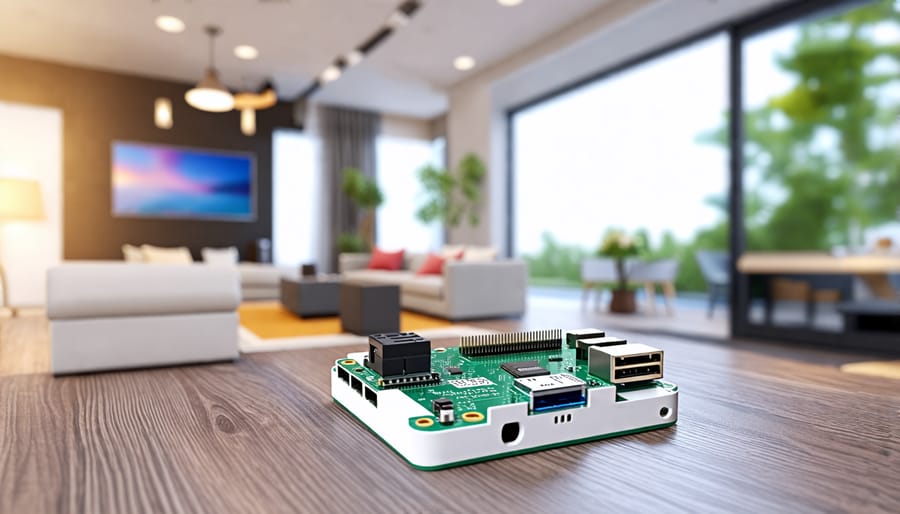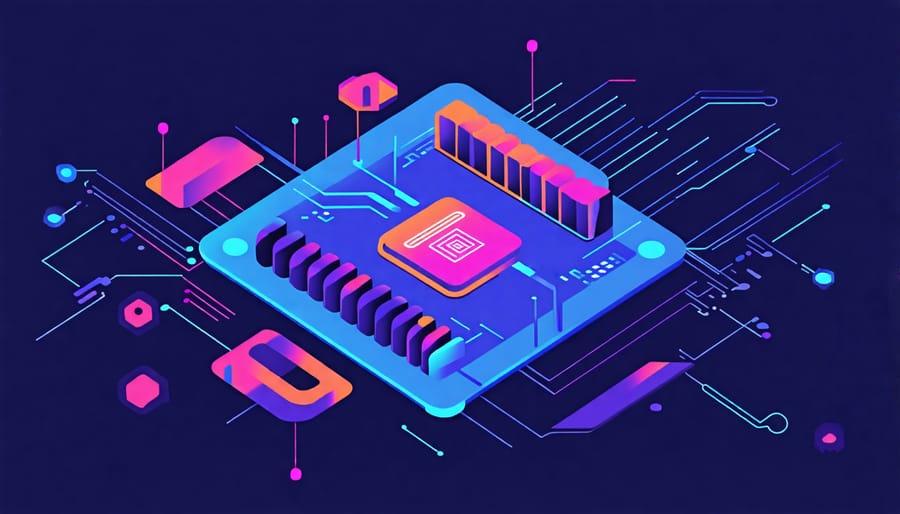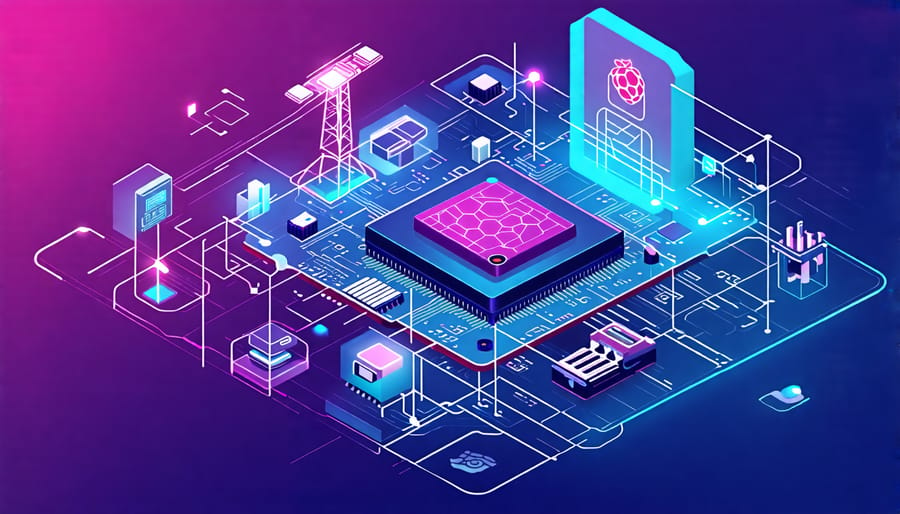Install and configure a Raspberry Pi as an edge computing device by setting up its operating system and connecting it to a network for real-time data processing at the source. Deploy AI models on your Raspberry Pi to perform edge tasks like image recognition or predictive maintenance without relying on cloud connectivity, maximizing efficiency and privacy. Build a smart home hub using Raspberry Pi by integrating IoT devices, enabling local control and automation to reduce latency and enhance device performance. Experiment with data filtering techniques on the Raspberry Pi to preprocess data before sending it to the cloud, conserving bandwidth and improving system responsiveness.
Understanding Edge Computing in Simple Terms
Imagine edge computing as a clever neighborhood bakery, where freshly baked bread is made right in your vicinity instead of being ordered from a far-off city bakery. This local approach cuts down on delivery time and ensures that your bread is fresh and exactly when you need it. Similarly, edge computing processes data closer to where it’s generated, instead of relying on a centralized server far away.
For instance, if you’re using a Raspberry Pi to monitor your garden’s climate, gathering data on temperature and humidity, edge computing means analyzing this data directly on the Raspberry Pi. This is more efficient than sending it to a distant cloud server. By doing so, you get quicker insights, save bandwidth, and reduce the chance of interruptions due to network delays.
This local processing is particularly useful in latency-sensitive applications, like real-time video surveillance or controlling smart home devices. Just as the neighborhood bakery can quickly tweak the bread recipe based on your feedback, your Raspberry Pi can adjust your garden’s watering schedule on the fly, optimizing resources on the spot. Edge computing thus opens exciting doors for DIY tech projects by offering speed and autonomy, empowering hobbyists to innovate with confidence.

Why Use Edge Computing with Raspberry Pi?
Integrating edge computing with Raspberry Pi projects offers a range of benefits for tech enthusiasts and educators. By processing data locally on the device rather than relying on a centralized cloud server, edge computing enhances performance and efficiency. It reduces latency significantly because data doesn’t have to travel long distances to the cloud and back. This is particularly useful for projects requiring real-time data processing, such as IoT applications and environmental monitoring systems.
Moreover, using edge computing with a Raspberry Pi allows for better bandwidth management. Since data is processed at the edge, only essential information is transmitted to the cloud, which minimizes bandwidth usage. This can be especially advantageous in areas with limited internet connectivity or where data costs are a concern. Additionally, edge computing strengthens data privacy and security as sensitive information is kept closer to the source rather than being sent over the internet.
Raspberry Pi’s compact and versatile nature makes it an ideal platform for edge computing. Whether you’re working on a smart home system, developing a network of sensors, or experimenting with a solar-powered Raspberry Pi, incorporating edge computing can optimize your project’s efficiency and responsiveness. By harnessing the power of edge computing, you can build robust prototypes and real-world applications that function efficiently without relying on constant cloud connectivity. Embracing this approach not only enhances the capabilities of Raspberry Pi projects but also expands the possibilities for innovation and experimentation.
Real-world Examples of Edge Computing with Raspberry Pi
Smart Home Automation
Smart home automation is rapidly advancing, and edge computing plays a key role in this evolution, particularly with the versatile Raspberry Pi. By leveraging edge computing, smart home devices can process data locally, reducing latency and dependency on cloud services. This enhances the efficiency and security of smart home operations, making the Raspberry Pi an ideal choice for tech enthusiasts and hobbyists interested in innovative projects.
Imagine setting up a security system using a Raspberry Pi that processes video feeds from your security cameras right at home. Through edge computing, the Pi can analyze these feeds in real-time, detecting motion or potential threats instantly and alerting you without delay. For those keen on exploring such possibilities, browsing through various Raspberry Pi security projects can provide practical insights and inspiration.
Additionally, edge computing with Raspberry Pi allows for customized smart home applications, such as personal assistants that understand your habits and preferences, or automated lighting systems that respond to environmental changes. Setting up these systems is not as complex as it appears; with a bit of guidance, beginners can follow simple instructions to create efficient, secure, and responsive smart home environments. Embracing edge computing innovations with Raspberry Pi not only enriches your tech skills but also transforms your home into an intelligent, interconnected space.

IoT in Agriculture
Edge computing is transforming agriculture by enabling real-time data analysis on-site, enhancing decision-making capabilities without relying on constant cloud connectivity. A practical example of this is using Raspberry Pi devices to bring edge computing to agricultural monitoring systems. Raspberry Pi, known for its affordability and versatility, is ideal for hobbyists and tech enthusiasts looking to explore edge computing applications.
In agriculture, Raspberry Pi can be integrated with sensors to monitor soil moisture, temperature, and humidity levels. These sensors feed data directly into the Raspberry Pi, which processes the information locally. This local processing allows for immediate insights into environmental conditions, helping farmers make quick adjustments to irrigation, for instance, without waiting for data to travel to a centralized cloud server and back.
Set up a Raspberry Pi with a soil moisture sensor and use Python scripts to analyze moisture levels. By connecting the Raspberry Pi to a local network, farmers can access this data on their mobile devices in real-time. This setup not only saves bandwidth but also ensures critical decisions are made promptly, especially in remote areas with unreliable internet.
Although relatively simple, such projects underscore the potential of edge computing in agriculture, offering educators and hobbyists an engaging hands-on learning experience while addressing real-world challenges.
Industrial Automation
Edge computing plays a transformative role in industrial automation by bringing computational power closer to the machinery and processes it manages. Leveraging the Raspberry Pi in these projects is a game-changer due to its affordability, flexibility, and robust community support. In industrial settings, edge computing with Raspberry Pi enables real-time data processing, reducing latency and improving the responsiveness of automated systems. This allows for quick decision-making, which is crucial for optimizing operations like predictive maintenance, quality control, and inventory management.
For instance, a Raspberry Pi can be integrated with sensors to monitor machinery health. The device can process data on-site and alert operators to potential issues before they lead to costly downtimes. Additionally, the Raspberry Pi’s adaptability makes it suitable for connecting legacy equipment to modern IoT ecosystems, demonstrating its value in industrial upgrade projects.
For those eager to dive into industrial automation with edge computing, starting with a Raspberry Pi can offer a practical and educational experience. With countless open-source resources and projects available online, enthusiasts can easily get involved and contribute to innovative solutions that modernize industry practices. This exploration not only enhances technical skills but also fosters an understanding of how edge computing can revolutionize industrial automation environments.
How to Get Started with Edge Computing on Raspberry Pi
To dive into the world of edge computing using a Raspberry Pi, start by gathering the essentials: a Raspberry Pi board (preferably a Pi 4), a microSD card with at least 16GB storage, a power supply, and internet connectivity. Begin by installing the operating system. Raspberry Pi OS is the most popular choice; you can easily install it using the Raspberry Pi Imager tool on your computer. Once your Pi is booted, update the system by running `sudo apt update && sudo apt upgrade`.
Edge computing often involves processing data at the source, so consider starting with a simple project like setting up a local server. Follow tutorials similar to those used for running a Minecraft server on Raspberry Pi to gain insights into server configuration and network management. Next, experiment with Python scripts to process sensor data or manage small-scale machine learning models directly on your Raspberry Pi. Libraries like TensorFlow Lite and OpenCV are excellent for these tasks.
You’ll also find Docker helpful for deploying applications in containers, adding flexibility and efficiency to your edge computing setup. Install Docker using a simple script available from their official docs. Finally, remember to secure your setup; use SSH keys for remote access, and keep your software updated to protect against vulnerabilities. By taking these actions, you’ll be well-equipped to harness the power of edge computing with your Raspberry Pi.

Challenges and Considerations
Implementing edge computing with Raspberry Pi presents several challenges and considerations. One major challenge is resource constraints, as Raspberry Pi devices have limited processing power and memory compared to conventional servers. This makes optimizing code for efficiency crucial. Power management is another consideration, especially for off-grid or portable applications, where balancing performance with battery life is key. Network reliability can impact edge computing effectiveness, so establishing robust communication protocols is essential. Additionally, ensuring data security and privacy remains a priority, requiring careful handling of sensitive information. Despite these challenges, Raspberry Pi offers a cost-effective and versatile platform for edge computing, empowering tech enthusiasts and educators to explore innovative solutions.
Conclusion
In conclusion, we’ve explored the exciting intersection of edge computing and Raspberry Pi, offering endless possibilities for tech enthusiasts. By deploying processing power closer to your data source, Raspberry Pi projects can now run smarter and more efficiently. Whether you’re looking to reduce latency, improve data privacy, or simply challenge yourself with a new project, edge computing empowers you to take your Raspberry Pi skills to the next level. We encourage you to dive in and experiment with these concepts in your own projects, unlocking the full potential of Raspberry Pi in the ever-evolving technology landscape.


